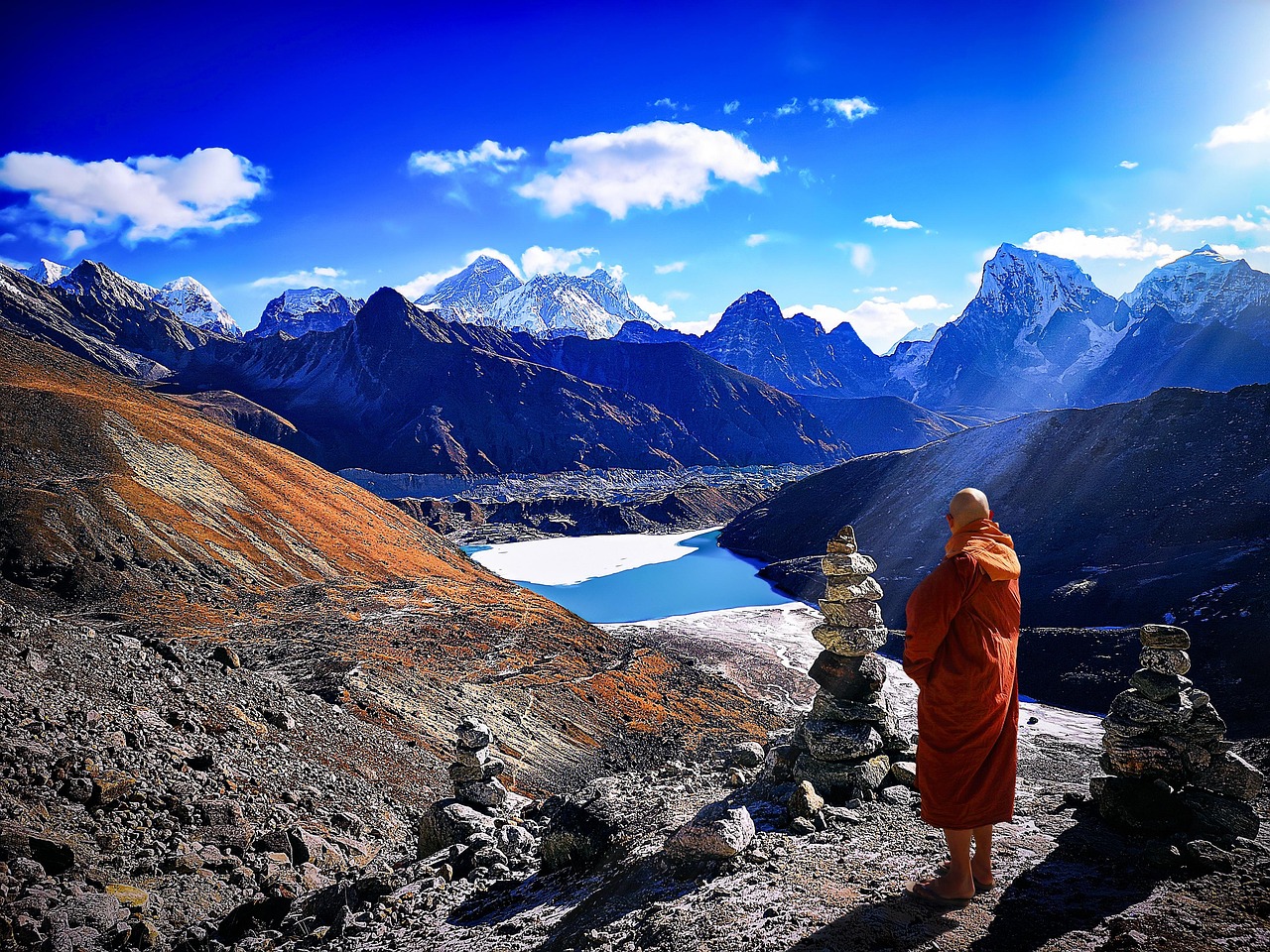The Himalayas offer some of the world’s most breathtaking treks, but choosing between the Annapurna Base Camp (ABC) Trek and the Everest Base Camp (EBC) Trek can be tough. Both promise stunning mountain views, rich cultural experiences, and unforgettable adventures—but they cater to different types of trekkers.
Whether you’re a first-time trekker or a seasoned hiker, this guide will break down the difficulty, scenery, cost, altitude risks, and cultural highlights of each trek. By the end, you’ll know exactly which trail matches your fitness level, budget, and travel style.
Difficulty Level & Physical Fitness: Which Trek is Harder?
- Everest Base Camp (EBC):
- Higher altitude (5,364m / 17,598ft) means thinner air and tougher acclimatization.
- Longer daily hikes (5–7 hours) with steep ascents, especially near Lobuche and Gorak Shep.
- Recommended for trekkers with moderate to high fitness levels.
- Annapurna Base Camp (ABC):
- Lower max altitude (4,130m / 13,549ft), reducing altitude sickness risks.
- Shorter walking days (4–6 hours) with gentler inclines, except for the steep climb to ABC.
- Better suited for beginners or those with average fitness.
Verdict: EBC is more physically demanding due to altitude and longer trekking days.
Scenery & Landscape Diversity: Which Trek Has Better Views?
- Everest Base Camp Highlights:
- Iconic peaks: Everest (8,848m), Lhotse (8,516m), Ama Dablam (6,812m).
- Dramatic glacial valleys, suspension bridges, and the famous Khumbu Icefall.
- Barren, high-altitude landscapes with fewer forests.
- Annapurna Base Camp Highlights:
- Annapurna I (8,091m), Machapuchare (6,993m), and Dhaulagiri (8,167m).
- Lush rhododendron forests, terraced rice fields, and hot springs at Jhinu Danda.
- More varied ecosystems, from subtropical forests to alpine zones.
Verdict: EBC offers legendary Himalayan giants, while ABC provides more diverse landscapes.
Altitude & Acclimatization: Which Trek is Safer?
- EBC’s High-Altitude Challenge:
- Reaches 5,364m, increasing the risk of acute mountain sickness (AMS).
- Requires 2+ acclimatization days (Namche Bazaar, Dingboche).
- Faster ascent = higher chance of headaches, nausea, or severe AMS.
- ABC’s Milder Altitude:
- Max elevation 4,130m, making AMS less common.
- Only 1 acclimatization day (usually in Deurali or Machapuchare Base Camp).
- Gradual climb through villages helps with adjustment.
Verdict: ABC is safer for altitude-sensitive trekkers.
Trek Duration & Itinerary: How Many Days Do You Need?
- Everest Base Camp:
- 12–14 days (Kathmandu to Kathmandu).
- Includes Lukla flight, acclimatization days, and return.
- Alternative routes: Gokyo Lakes (adds 2–3 days).
- Annapurna Base Camp:
- 7–12 days (Pokhara to Pokhara).
- Shorter due to lower altitude and easier trails.
- Optional add-ons: Poon Hill sunrise hike (+2 days).
Verdict: ABC is faster and more flexible for time-strapped travelers.
Crowds & Trail Popularity: Which Trek is Less Busy?
- EBC:
- Extremely popular, especially in peak seasons (April–May, October–November).
- Teahouses can get booked quickly; trails feel crowded near Namche.
- ABC:
- Fewer trekkers outside peak months.
- Quieter trails, especially if starting from Ghandruk or Landruk.
Verdict: ABC offers a more peaceful experience.
Cultural Experience: Sherpa vs Gurung Villages
- EBC’s Sherpa Culture:
- Visit Tengboche Monastery, the spiritual heart of the Khumbu.
- Learn about Buddhist traditions and yak herding.
- ABC’s Gurung & Magar Villages:
- Stay in traditional stone houses in Ghandruk and Chhomrong.
- Experience local hot springs (Jhinu Danda) and rice wine tasting.
Verdict: EBC is more monastic and spiritual, while ABC is more immersive in local village life.
Accommodation & Facilities: Teahouses & Amenities
- EBC Teahouses:
- Basic lodges, fewer luxury options.
- Limited WiFi (paid), shared bathrooms common.
- ABC Teahouses:
- More comfortable, some with attached bathrooms.
- Better food variety (Western & Nepali dishes).
Verdict: ABC has better facilities for comfort seekers.
Best Time to Trek: Seasonal Differences
- Peak Seasons (Best Weather):
- Spring (March–May): Rhododendrons bloom (ABC).
- Autumn (October–November): Clear skies, best views (both treks).
- Off-Season Risks:
- Winter (Dec–Feb): Extreme cold, possible snow.
- Monsoon (June–Sept): Rain, landslides (ABC more affected).
Verdict: Autumn is ideal for both, but ABC is better in spring.
Cost & Permits: Budget Comparison
- EBC Costs:
- $1,200–$1,800 (flights to Lukla add expense).
- Permits: Sagarmatha National Park ($30) + Khumbu Pasang Lhamu entry fee ($20).
- ABC Costs:
- $800–$1,200 (cheaper flights to Pokhara).
- Permits: Annapurna Conservation Area (ACAP) ($30) + TIMS card ($20).
Verdict: ABC is more budget-friendly.
Safety & Risks: Weather, Evacuations, and Health
- EBC Risks:
- Altitude sickness, helicopter evacuations more common.
- Colder temperatures, especially near Gorak Shep.
- ABC Risks:
- Landslides in monsoon, but generally safer.
- Lower altitude = fewer emergencies.
Verdict: ABC is safer overall, but EBC is manageable with proper acclimatization.
Conclusion: Which Trek Should You Choose?
Pick Everest Base Camp If You:
✔ Want to see Mount Everest up close.
✔ Can handle higher altitude and longer days.
✔ Love Sherpa culture and monasteries.
Pick Annapurna Base Camp If You:
✔ Prefer lower altitude and easier trails.
✔ Want lush forests, hot springs, and village life.
✔ Are on a tighter budget or shorter timeline.
Final Tip: If you can’t decide, consider the Annapurna Circuit (longer but combines both worlds) or the Everest Three Passes Trek (for extreme adventurers).

No Responses